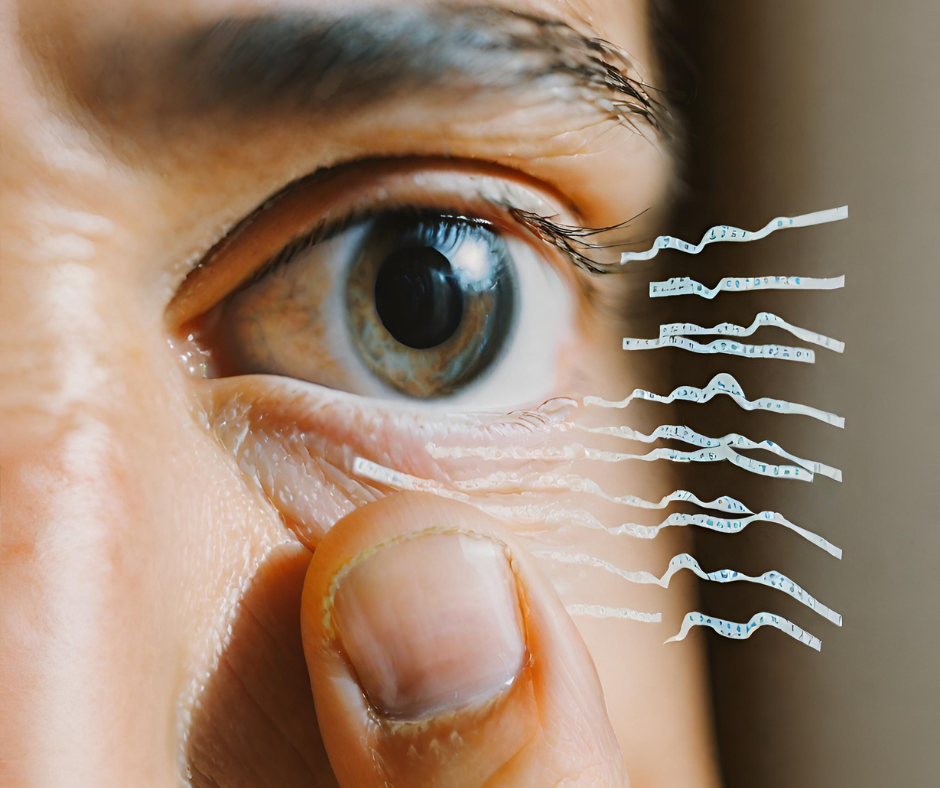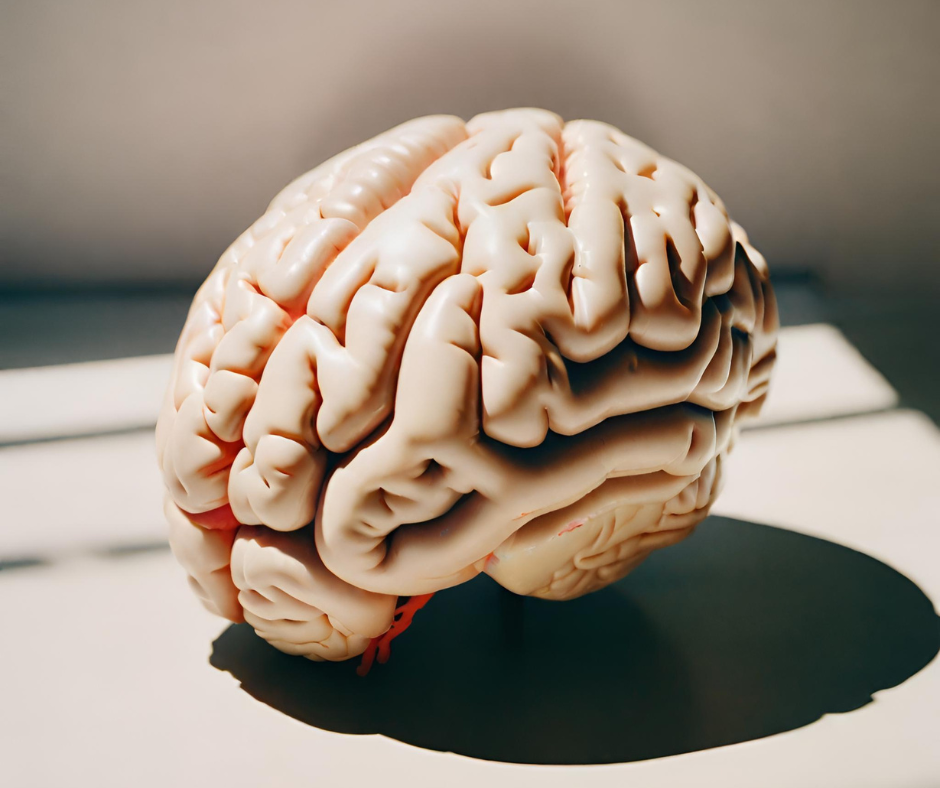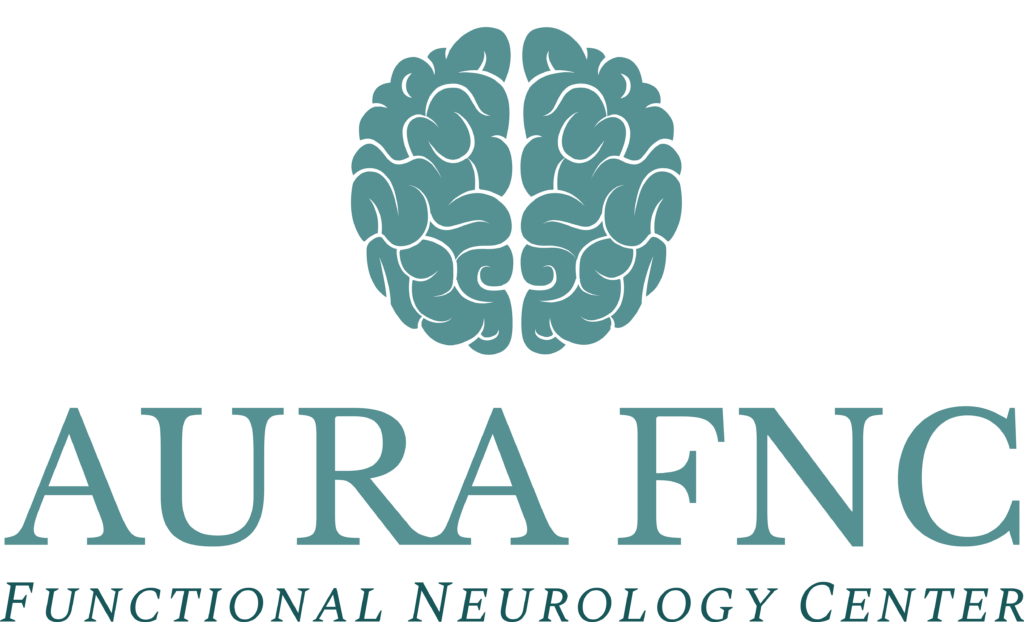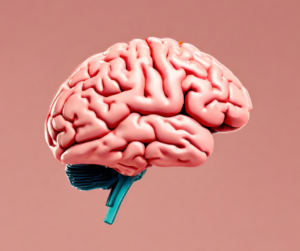Explore how chiropractors can help migraine headaches. Learn about symptoms, parts of the brain involved, and chiropractic neurology treatment options from Dr. Diana Tyler.

Dr. Diana Tyler DC, DACNB
Founder of Aura Functional Neurology Center. Board Certified Chiropractic Neurologist and migraine specialist. Graduate of Palmer College of Chiropractic and Diplomate of the American Chiropractic Neurology Board.
Explore how chiropractors can help migraine headaches. Learn about symptoms, parts of the brain involved, and chiropractic neurology treatment options.
Definition of Migraine
Migraine is a neurological condition characterized by recurrent episodes of a severe headache, typically accompanied by other symptoms such as sensitivity to light, sound, and odors, as well as nausea and vomiting. It is estimated that around 12% of the population worldwide suffers from migraines, making it one of the most common types of headaches. Migraines can be debilitating, affecting a person’s quality of life and ability to carry out everyday activities. Migraines can last for hours or even days, and some individuals experience warning signs before an episode, known as an aura.
Symptoms of migraine
Migraine headaches can be debilitating and greatly impact the quality of life for those who suffer from them. Symptoms of a migraine attack can vary among individuals and even within the different phases of an attack.
One of the key characteristics of a migraine is a severe headache that is often described as a pulsating or throbbing pain. This headache can be one-sided or affect both sides of the head. In addition to the headache, individuals may also experience sensitivity to light (photophobia), sensitivity to sound (phonophobia), and even sensitivity to smells.
Visual disturbances are also common during a migraine attack. These can include seeing flashing lights, and zigzag lines, or experiencing temporary vision loss or blurred vision. Nausea and vomiting are frequently associated symptoms, and some individuals may also experience dizziness or lightheadedness.
It is important to note that not everyone will experience all of these symptoms and the severity and frequency of symptoms can vary. Some individuals may experience a premonitory phase before the headache, characterized by changes in mood, appetite, or energy levels. Others may experience an aura phase, which involves neurological symptoms like visual disturbances, just before the headache begins.
Understanding the symptoms of a migraine is essential for accurate diagnosis and proper treatment. If you experience severe headaches, sensitivity to light, visual disturbances, and nausea, it is recommended to consult with a healthcare professional for a thorough evaluation and appropriate management of your symptoms.
Parts of the brain involved in migraine
Migraine is a complex neurological condition that involves various parts of the brain. The pathophysiology of migraine involves a cascade of events that occur within specific regions and pathways in the brain.
One important area implicated in migraine is the trigeminal nerve. This nerve is responsible for transmitting sensations from the face, head, and neck to the brain. In migraine, the trigeminal nerve becomes sensitized, leading to the release of neuropeptides and activation of pain pathways.
The brainstem also plays a crucial role in migraine. The trigeminal nerve fibers connect with neurons in the brainstem, which then relay information to higher centers in the brain. Dysfunction in the brainstem can contribute to the initiation and maintenance of migraine attacks.
Another region involved in migraine is the thalamus. This structure acts as a sensory relay station, processing and transmitting sensory information to different parts of the brain. In migraine, the thalamus can exhibit abnormal activity, leading to sensory disturbances experienced during an attack.
Neurotransmitters such as serotonin, dopamine, and calcitonin gene-related peptide (CGRP) also play a role in migraine. Imbalances in these neurotransmitters can affect the sensitivity of pain pathways and contribute to the development and progression of migraines.
Understanding the involvement of these specific brain regions, pathways, and neurotransmitters is key to developing targeted treatments for migraine. By targeting these areas, healthcare professionals can potentially provide relief and improve the quality of life for individuals with migraine.
Neurological symptoms in migraine
Neurological symptoms are commonly associated with migraines, and they can vary greatly between individuals. One of the hallmark neurological symptoms of migraine is visual disturbances, often referred to as aura. These visual disturbances can include seeing flashing lights, zigzag lines, or blind spots in the field of vision.
In addition to visual disturbances, migraine sufferers may also experience sensory changes. This can include heightened sensitivity to light and sound, known as photophobia and phonophobia respectively. Even mild levels of light and noise can become unbearable during a migraine attack.
which is an abnormal sensation to normally non-painful stimuli, can also be seen in some people with migraine attacks. Itching, tingling, and burning sensations are common examples of allodynia, causing excessive perception of neck pain.
Motor dysfunction is another neurological symptom that can be present during a migraine. This can manifest as difficulty with coordination, weakness in certain muscle groups, or even temporary paralysis in rare cases. Some individuals may also experience difficulty speaking or understanding speech, known as aphasia, during a migraine episode.
It’s important to note that not all migraine sufferers experience the same neurological symptoms, and the intensity and duration of these symptoms can vary from person to person. Therefore, it is crucial for healthcare professionals to carefully evaluate and assess each migraine patient to determine the most appropriate treatment plan.
The role of traditional Chiropractic in treating migraines
Traditional chiropractic care can play a significant role in the treatment of migraines. Chiropractors are trained to assess and address the underlying causes of migraines, rather than simply providing temporary relief from symptoms.
One of the primary approaches used in traditional chiropractic care for migraine management is spinal adjustment. This technique involves manual therapies where you gently manipulate the spine to restore proper alignment and function. By realigning the vertebrae in the neck and upper back, chiropractors aim to help alleviate migraine symptoms and reduce the frequency of episodes.
Soft tissue therapies are also commonly used by chiropractors to treat migraines. These techniques focus on relieving muscle tension and reducing trigger points in the neck and shoulders, management of disc herniations, and muscle contractions which can contribute to migraines. There are many methods used for the treatment of headaches including massage, trigger point therapy, and stretching help to release muscle tightness, improve the range of motion, and decrease pain associated with migraines.
In addition to spinal adjustments and soft tissue therapies, chiropractors may also incorporate a multimodal approach, where they use other manual therapies, relaxation techniques, and lifestyle advice to address the unique needs of each migraine patient. By taking a holistic approach, chiropractors aim to not only alleviate migraine symptoms but also improve overall quality of life.
The Role of Chiropractic Neurology in Treating Migraine
Chiropractic Neurology, also known as Functional Neurology, plays a significant role in treating migraines by providing holistic neurological care. Chiropractic Neurologists focus on understanding how altered brain function and neural excitation contribute to migraines and use targeted interventions to alleviate symptoms.
Functional neurologists employ techniques and methods that aim to enhance neuroplasticity, which is the brain’s ability to adapt and reorganize itself. By understanding the specific areas of the brain that are involved in each patient with migraine through a full bedside functional neurological evaluation, Functional neurologists utilize neuroplasticity-based interventions, therapies, and exercises to promote healing and restore normal brain function in these regions.

Chiropractic Treatments for Migraines
Chiropractic treatment for headaches offers a holistic approach, providing a potential solution for individuals seeking a drug-free alternative to traditional medical interventions. Whether a patient is dealing with chronic migraine only or also additional symptoms of chronic neck pain, occasional headaches, or chronic tension headaches- all of these need to be addressed simultaneously. By focusing on the health and alignment of the spine, chiropractors aim to address the structural cause of migraines rather than simply alleviating symptoms. Through various techniques such as spinal manipulation, soft tissue therapies, and trigger point therapy, chiropractors strive to reduce muscle tension, improve spinal function, and promote proper blood flow to help alleviate migraines and enhance overall well-being. In this article, we will explore the effectiveness of chiropractic treatments for migraines and the potential benefits they can offer to individuals seeking relief from this debilitating condition.
Chiropractic adjustment
Chiropractic adjustment is a form of treatment that can be effective in helping to alleviate frequent headaches and migraines. It involves the use of Chiropractic techniques that use physical manipulation of the spine and other body parts to restore proper alignment and function.
When it comes to migraines, chiropractic adjustment can help relieve muscle tension in the neck and upper back area, which is a common trigger for migraines, especially in adults with neck pain. By restoring proper alignment, chiropractic adjustments can help reduce the pressure and inflammation around the nerves, blood vessels, and muscles in the neck and head.
The physical manipulation involved in chiropractic adjustment can also lead to improvements in blood flow and reduced pain levels, which are both important factors in migraine management. By restoring spinal function, chiropractic care can help reduce the frequency and severity of migraines, improving the overall quality of life for migraine sufferers.
In conclusion, chiropractic adjustment can be a valuable part of a comprehensive treatment plan for migraines. Utilizing physical manipulation to restore alignment and function, can help relieve muscle tension and reduce the pain associated with migraines. If you are suffering from migraines, consulting with a chiropractor may be a helpful option to consider.
Soft tissue therapies
Soft tissue therapies are an integral part of chiropractic care for treating migraines. These therapies focus on alleviating muscle tension, which is a common cause of headaches. By targeting the soft tissues, such as muscles, tendons, and ligaments, chiropractors aim to reduce tension and restore proper function, leading to a reduction in headache symptoms.
One effective soft tissue therapy used in migraine treatment is myofascial release. This technique involves applying sustained pressure to the affected areas to release tension in the connective tissues that surround the muscles. By releasing tension in the fascia, blood flow can improve, reducing inflammation and relieving headache symptoms.
Another technique utilized in soft tissue therapies for migraines is trigger point therapy. Trigger points are hyperirritable knots within the muscle fibers that can refer pain to other areas of the body, including the head. Chiropractors apply pressure to these trigger points to release muscle constriction and alleviate headaches.
In addition to myofascial release and trigger point therapy, chiropractors may incorporate other soft tissue techniques, such as stretching and deep tissue massage, to address muscle tension and promote relaxation.
Overall, soft tissue therapies in chiropractic care for migraines work by targeting and releasing muscle tension, improving blood flow, reducing inflammation, and alleviating headache symptoms. These therapies provide a holistic and non-invasive approach to migraine treatment, helping patients find relief and improve their quality of life.
Brain training
Brain training can be an effective treatment for migraine headaches, as it targets the underlying neurological dysfunctions that contribute to the manifestation of migraines. This approach recognizes that migraines are not solely a result of vascular or muscular factors, but also involve brainstem and cortical dysfunctions.
Neuroplasticity, the brain’s ability to rewire and adapt, plays a crucial role in brain training for migraine treatment. Through targeted exercises and activities, brain training stimulates neuroplasticity, encouraging the brain to create new neural connections and improve overall function.
Specific brain training techniques can be utilized to address both brainstem and cortical dysfunctions associated with migraines. For brainstem dysfunction, exercises that focus on improving balance and coordination can be beneficial. These exercises challenge the brainstem to become more efficient and better regulate pain signals.
In the case of cortical dysfunction, techniques such as cognitive training, memory exercises, and sensory integration activities can be employed. These exercises help strengthen the connections within the cortex, improving the brain’s ability to process and regulate sensory information.
By targeting these specific dysfunctions through brain training, individuals with migraines can experience a reduction in the frequency and severity of their headaches. This approach goes beyond simply managing symptoms and addresses the root cause of migraines, leading to long-term relief and improved quality of life.
Benefits of Chiropractic Care for Adults With Headache Disorders
Chiropractic care offers several benefits for adults with headache disorders. Many individuals suffering from headaches and migraines seek relief through chiropractic treatments, which focus on the spine and its alignment. Chiropractors use various techniques, such as spinal manipulation and soft tissue therapies, to help alleviate muscle tension and improve spinal function. By addressing any misalignments and imbalances in the spine, chiropractic adjustments can reduce headache frequency, severity, and duration. Furthermore, chiropractic care can enhance blood flow and alleviate tension in the muscles surrounding the head and neck, which can contribute to headache relief. Scientific evidence supports the effectiveness of chiropractic treatments for adults with headache disorders, offering them a natural and drug-free alternative to traditional treatment methods. By seeking chiropractic care, patients can experience improved quality of life and better manage their headache symptoms.
Improved blood flow and spinal function
Chiropractic care, as an alternative treatment, has been shown to have positive effects on individuals suffering from migraine. Many factors in migraines cannot always be managed, such as environmental triggers – but working on posture, neck tensions, chronic trigger points, and hypermobility with help support migraine management. Through various techniques such as spinal adjustments, manipulative treatments, and soft tissue therapies, chiropractors can restore proper alignment and mobility in the spine, thus reducing tension in the upper body and promoting an increased threshold before a migraine attack.
In addition to spinal adjustments, chiropractors may also employ soft tissue therapies such as trigger point therapy and muscle tension release techniques. These therapies target specific muscles or areas of tension, helping to relax the surrounding tissues and alleviate migraines. By reducing muscle tension and increasing flexibility, these soft tissue therapies further contribute to improved blood flow and spinal function in individuals with migraines.
Overall, chiropractic care offers a holistic and drug-free approach to managing migraines. By addressing the root cause of the problem, chiropractors can help restore proper spinal function, ultimately enhancing the quality of life for migraine sufferers. If you experience migraines, consider consulting a chiropractor to explore effective and natural treatment options.
Reduced Muscle Tension and Pain Reduction
Chiropractic care can be highly effective in reducing muscle tension and providing pain reduction for individuals with migraines. Chiropractors use various techniques to address muscle tension and the resulting pain and constant dull ache, including chiropractic adjustments and soft tissue therapies.
Chiropractic adjustments, also known as spinal manipulations, involve realigning the vertebrae in the spine. This helps to alleviate pressure and nerve interference that may be contributing to migraine symptoms. By restoring proper spinal function, chiropractors can reduce muscle tension, improve blood flow, and enhance overall nervous system functioning. These adjustments not only provide immediate pain relief but also contribute to the long-term management of migraines.
Soft tissue therapies, such as trigger point therapy and muscle tension release techniques, are another crucial aspect of chiropractic care for migraine sufferers. These therapies involve targeted manipulation of specific muscles and areas of tension and neuromuscular massage. By releasing muscle knots and promoting relaxation of the surrounding tissues, soft tissue therapies help to alleviate muscle tension and reduce migraine pain.
The combination of chiropractic adjustments and soft tissue therapies provides numerous benefits for individuals with migraines, especially for migraine medication nonresponsive patients. These treatments not only reduce muscle tension and provide pain relief but also improve blood flow, spinal function, and overall nervous system health. By addressing the root cause of migraines and promoting optimal functioning of the body, chiropractic care offers an effective and holistic approach to managing migraines and improving quality of life.
Improved Quality of Life
Chiropractic care has shown promising results in improving the quality of life for adults with headache disorders whether dealing with chronic tension-type headaches or migraine disease. Through various treatments and therapies, chiropractors can help reduce pain and improve overall well-being.
Benefits of Chiropractic Neurology for Adults with Headache Disorders
Chiropractic Neurology also known as Functional Neurology is a valuable therapy for adults suffering from headache disorders, especially migraine disorder. Chiropractic neurology focuses on the neurological aspects of the Central Nervous System (CNS) and peripheral Nervous System (PNS) and their connection. Offering a holistic and natural approach to treating and managing migraine. Through brain training techniques, chiropractic neurology can help stabilize regions of soft lesions in the brain reducing neurological symptoms and providing neural stability. Additionally, chiropractors trained in neurology can offer a range of specialized treatments to address specific neurological issues that may be contributing to headaches. Techniques like soft tissue therapies, trigger point therapy, and muscle tension release further promote relaxation and alleviate headache pain. By improving blood flow and enhancing nervous system functioning, chiropractic neurology can help adults with headache disorders experience long-term relief and improved quality of life.
Neuroplasticity
Neuroplasticity refers to the brain’s ability to change and reorganize itself through neural connections in response to various stimuli and experiences. This concept is highly relevant in the context of chiropractic neurology care for adults with headache disorders.
The brain possesses a remarkable capacity to adapt and rewire its neural pathways. Functional Neurology interventions, such as neuromodulation devices, photobiomodulation, mild hyperbaric oxygen therapy, vestibular rehabilitation, and oculomotor, motor, and cognitive training influence these neural connections and improve brain function.
Through adjustments and manipulations, and brain training programs, chiropractic neurologist care focuses on reducing migraine frequency and severity.

Addressing migraine as a brainstem and cortical dysfunction
Migraine has been increasingly recognized as a complex neurological disorder involving both brainstem and cortical dysfunction. The brainstem, which plays a vital role in relaying sensory information and regulating pain, is highly involved in the pathophysiology of migraines. Additionally, cortical dysfunction refers to abnormal neural activity in the outer layer of the brain responsible for processing sensory information.
The relationship between brainstem and cortical dysfunction in migraines is believed to be interdependent. Dysfunction in the brainstem can trigger abnormal cortical activity, and vice versa. This intricate interplay leads to the characteristic symptoms experienced during a migraine attack, such as throbbing head pain, sensitivity to light and sound, and nausea.
Chiropractic Neurology care offers a non-pharmacological approach to address these neurological dysfunctions and provide relief to migraine sufferers. By utilizing concepts from applied clinical neuroscience techniques, Functional Neurologists can target the underlying mechanical issues in the brain to reduce the frequency of migraine attacks on the nervous system. This can help normalize brainstem function and reduce abnormal firing patterns in the cortex.
Migraine as an altered state of neural excitation
Migraine can be characterized as an altered state of neural excitation, as it involves abnormal changes in neural activity within the brain due to various neurological and chemical imbalances. During a migraine episode, there is an increase in neural firing and a decrease in inhibitory neurotransmitter activity, leading to a state of heightened excitability which can have a direct impact on blood supply to multiple regions of the brain.
These changes in neural activity contribute to the development of migraines in several ways. Firstly, the increased neural firing leads to a release of inflammatory substances and neurotransmitters, which can cause blood vessels in the brain and surrounding areas to dilate and become inflamed. This inflammation further sensitizes the nerves and increases pain perception.
Additionally, the altered neural activity can disrupt the normal processing of sensory information, leading to the characteristic symptoms experienced during a migraine attack. The increased excitability can result in hyper-responsiveness to stimuli such as light, sound, and smells, causing sensory overload and worsening of symptoms.
Furthermore, the changes in neural activity can affect the autonomic nervous system, leading to symptoms such as nausea and vomiting. The dysregulation of the autonomic system during migraines contributes to gastrointestinal disturbances and further exacerbates the overall discomfort experienced. The pathway for the autonomic nervous system is bidirectional which is why stress management is important in migraine prevention.
By understanding migraines as an altered state of neural excitation, healthcare professionals, including chiropractors and chiropractic neurologists, can tailor their treatment approaches to address the underlying neural dysfunctions. Through techniques such as spinal manipulation and soft tissue therapies, brain training exercises, and autonomic regulation, chiropractic neurology care aims to restore neural balance and reduce neural excitability, providing relief to individuals experiencing migraines.







